

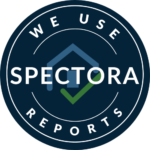
Balcony Inspection and Rebuilds are buildings with exterior elevated elements that have balconies, decks, porches, stairways, walkways, and entry structures that extend beyond the exterior walls of the building and that rely in whole or in substantial part on wood or wood-based products for structural support or stability.
The Balcony Inspection Law SB 721 (Chapter 445, Stats. 2018) was signed by Governor Brown in response to the 2015 Berkeley balcony collapse. The balcony collapsed due to decayed wooden joists; six young adults on the balcony were killed and seven others were injured, mostly Irish citizens, visiting California as part of UC Berkeley’s summer exchange program. While some local governments already impose a local inspection program, this California law requires inspection of specific balconies throughout California.
Buildings with 3 or more units that have:

Buildings that are proposed for conversion to condominiums to be sold to the public after January 1, 2019, must be inspected prior to the first close of escrow.
Inspections of the balconies, decks, porches, stairways, walkways, and entries as described above must be inspected by January 1, 2025, with certain exceptions, and requires subsequent inspections every 6 years.
The inspection of buildings for which a building permit application has been submitted on or after January 1, 2019, shall occur no later than 6 years following issuance of a certificate of occupancy from the local jurisdiction and shall otherwise comply with the provisions of this law.
If the property was inspected within 3 years prior to January 1, 2019, by an inspector as described in the law and a report of that inspector was issued stating that the exterior elevated elements and associated waterproofing elements are in proper working condition and do not pose a threat to the health and safety of the public, no new inspection shall be required until January 1, 2025.
The inspection required by this law must, at a minimum, include:
The evaluation and assessment shall address each of the following as of the date of the evaluation:
Contact us to request an assessment.
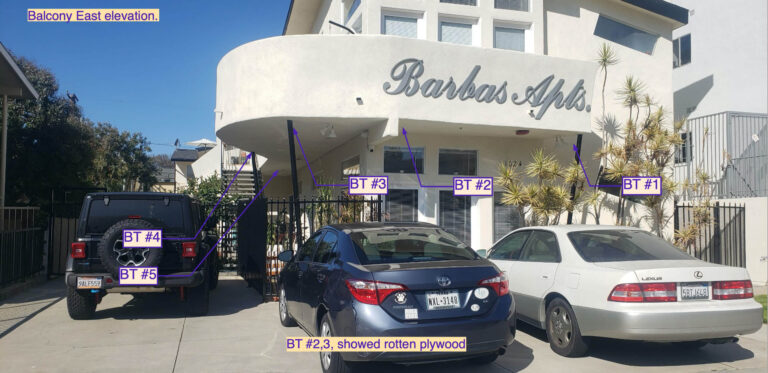
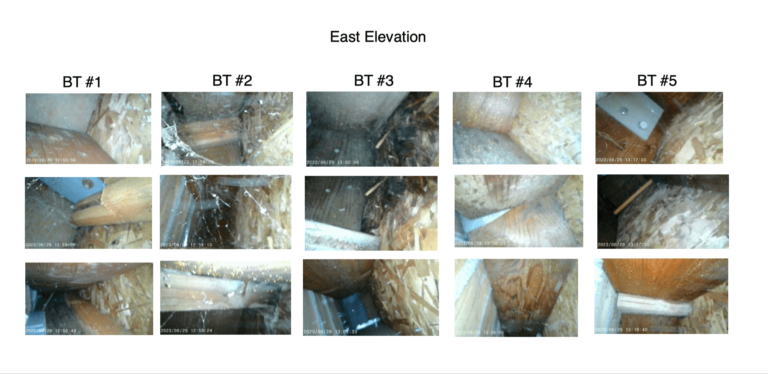
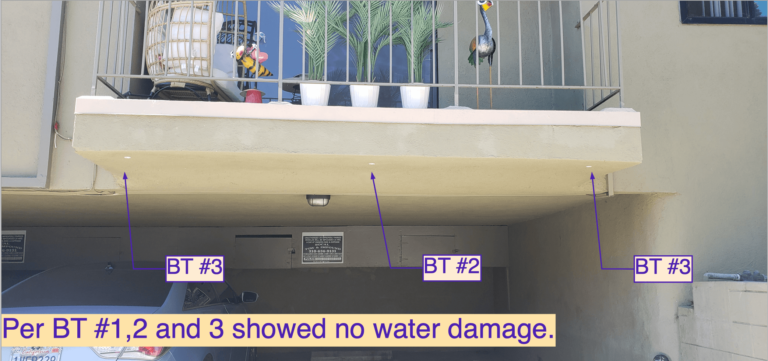
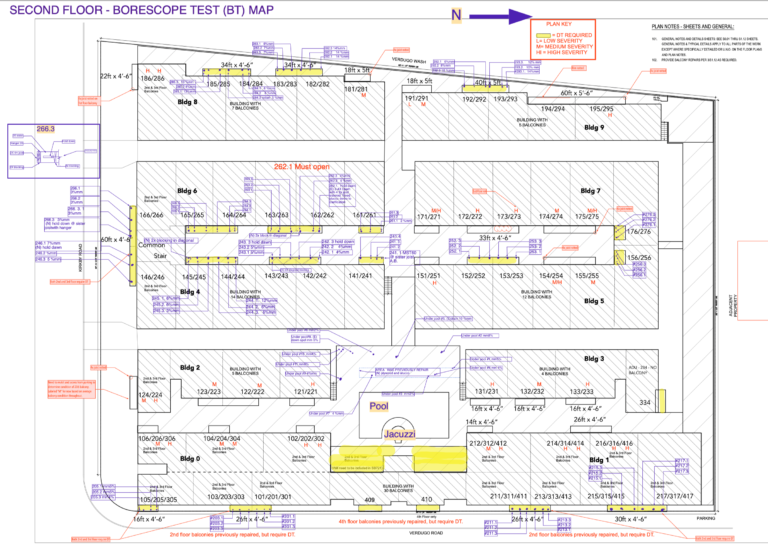

The inspector conducting the inspection shall produce an initial report and a final report indicating that any required repairs have been completed.
A written report of the evaluation stamped or signed by the inspector is presented to the owner of the building or the owner’s designated agent within 45 days of completion of the inspection.
The report shall include photographs, any test results, and narrative sufficient to establish a baseline of the condition of the components inspected that can be compared to the results of subsequent inspections. In addition to the evaluation required by this section, the report shall advise which, if any, exterior elevated element poses an immediate threat to the safety of the occupants, and whether
preventing occupant access or conducting emergency repairs, including shoring, are necessary.
A copy of the inspection report must be presented to the owner of the building within 45 days of the completion of the inspection. The law requires that if the inspection reveals conditions that pose an immediate hazard to the safety of the occupants, the inspection report be delivered to the owner of the building within 15 days and emergency repairs be undertaken, as specified, with notice given to the local enforcement agency.
Copies of all inspection reports shall be maintained in the building owner’s permanent records for not less than two inspection cycles and shall be disclosed and delivered to the buyer at the time of any subsequent sale of the building.
Immediate Threat – An exterior elevated element that the inspector advises poses an immediate threat to the safety of the occupants or finds preventing occupant access or emergency repairs, including shoring, or both, are necessary, shall be considered an emergency condition and the owner of the building shall perform required preventive measures immediately.
Immediately preventing occupant access to the exterior elevated element until emergency repairs can be completed constitutes compliance with this paragraph. Repairs of emergency conditions shall comply with the requirements of the law, be inspected by the inspector, and be reported to the local enforcement agency.
No Immediate Threat – The owner of the building that requires corrective work to an exterior elevated element that, in the opinion of the inspector, does not pose an immediate threat to the safety of the occupants, shall apply for a permit within 120 days of receipt of the inspection report. Once the permit is approved, the owner of the building shall have 120 days to make the repairs unless an extension of time is granted by the local enforcement agency.
If the owner of the building does not comply with the repair requirements within 180 days, the inspector shall notify the local enforcement agency and the owner of the building. If within 30 days of the date of the notice the repairs are not completed, the owner of the building shall be assessed a civil penalty
based on a fee of not less than $100 or more than $500 per day until the repairs are completed, unless an extension of time is granted by the local enforcement agency. If a civil penalty is assessed, a building safety lien may be recorded against the property.
Yes. The State law provides that the governing body of any city, county, or city and county, may enact ordinances or laws imposing requirements greater than those imposed by this law.
References:
California Senate Bill 721 (SB721) was enacted in response to the 2015 tragic deck collapse at the Library Gardens Apartments resulting in the deaths of six people and serious injury to seven more. SB721 legislation requires inspection of all Exterior Elevated Elements (EEE) of apartment communities prior to January 1, 2025 and every six years thereafter.
California Senate Bill 326 (SB326) was enacted in response to the 2015 tragic deck collapse at the Library Gardens Apartments resulting in the deaths of six people and serious injury to seven more. SB326 legislation requires the inspection of all Exterior Elevated Elements (EEE) of common interest communities prior to January 1, 2025, and every nine years thereafter.
Should initial inspections identify conditions that effect the structural integrity of Exterior Elevated Elements, We offer a complete package of services to assist in the repair of the affected element(s). Our services include architectural and structural design of repairs, permit application, bid preparation and management, and more.
Finding a licensed structural engineer is crucial when you need professional expertise in assessing, designing, or inspecting the structural integrity of a building or infrastructure. Structural engineers play a pivotal role in ensuring the safety and stability of structures, for both homes and commercial buildings.
PAR’s engineering partners can provide a report detailing the current condition of the Exterior Elevated Elements at your property for the purpose of estimating the cost of repairs. This design should then be submitted to the authority with jurisdiction for permitting and then to a contractor for bidding.